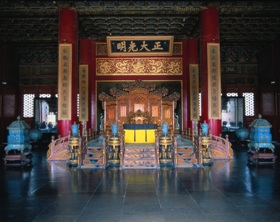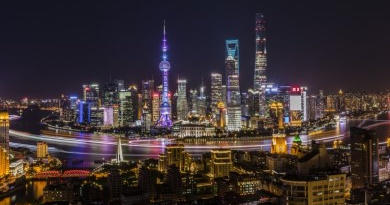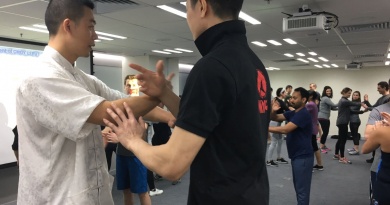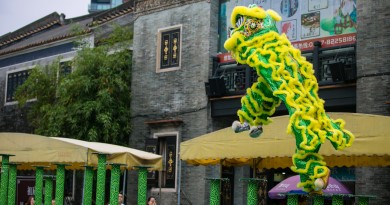Beijing: The Ancient Chinese Capital
Beijing was much admired by the Italian adventurer Marco Polo, who called it Cambaluc or Khanbalig, meaning ‘the City of the Khan’. He described the palace there “the greatest palace that ever was….The walls were covered with gold and silver and the Hall was so large that it could easily dine 6,000 people……all executed with such exquisite art that you regard them with delight and astonishment”.
Having been the seat of the throne of the Middle Kingdom for over 800 years, Beijing or ‘Peking’ has been the country’s political and cultural centre for centuries. Not only the Han Chinese claimed the throne from Beijing, the Mongols and the Manchus also established their rule of the empire from this city. The city is full of history to be told, and there are great world heritage sites: The Forbidden City, the Great Wall, the Temple of Heaven, the Summer Palace which tell visitors a lot about its stories.
Today, Beijing is the capital of the People’s Republic of China as well as the political and culture centre of the country. The city was the host city for the 2008 Summer Olympics. New landmarks are purposed-built, and the most eye-catching ones are The Bird’s Nest (National Stadium) and the Watercube (National Aquatic Centre).
Besides history, Beijing is an epicenter of Chinese tradition. Intangible cultural heritage such as Peking opera, Chinese calligraphy, art of Chinese seal engraving; culinary culture such as the Peking duck, imperial banquet and traditional Pekingnese cuisine can be enjoyed in Beijing. No wonder locals proudly claim themselves as ‘Beijinger’. Beijing is the air transport hub of China and there are numerous connections to Europe, America, and SE Asia, and one of the best place to start your momentous China journey.
Send us a request and discover this ancient Chinese capital together!
Sample Itinerary: 4 Days /3 Nights Historical Beijing
| Day 1 | Arrival Arrive Beijing. Meet and greet at the airport and transfer to hotel. |
| Day 2 | The Imperial Story Transfer to Tiananmen Square, the biggest square in China with capacity of one million people, where national celebrations are held. Make a stop at the modern marvel: The National Center for Performing Arts, commonly known as ‘the Egg’ made of titanium and glass on a man-made egg. Tour to the Forbidden City, the imperial palace for the Ming and Qing dynasties after lunch. Comprising of 720,000 sq.m. of land and over 900 rooms, it is the biggest palace complex in China and now a UNESCO World Heritage site. After lunch, transfer to Temple of Heaven, the place where the Son of Heaven prayed for good harvest on behalf of his countrymen in ancient time. Enjoy a ‘Legend of Kungfu show’ after dinner. |
| Day 3 | The Ancient and Modern Marvels Transfer to Mutianyu section of the Great Wall. Away from the tourist crowd of Badaling and Juyongguan sections, you’ll see the rugged and less ‘commercial’ side of the Great Wall, and rolling hills of the countryside. Make a photo stop at the Bird’s Nest (National Stadium) and the Water Cube (National Aquatic Stadium) built for the Olympics before returning to Beijing. Transfer to Summer Palace, the Royal Garden for the Imperial family and a masterpiece of Chinese landscape garden design. Enjoy a walk along Wangfujing, the famous pedestrian shopping area and the famous food street to find out all sorts of exotic snacks before returning to the hotel. |
| Day 4 | The Story of the Locals Enjoy a leisure walk along Dashanlan, a market place in Beijing since the Qing dynasty in the 17th century to experience a touch of old Beijing. Tour to Hutong on tricycle, the traditional Beijingnese quadruple and make a stop at one of the local families to learn to make Chinese dumpling, followed by lunch with the local family. Enjoy a ride on a traditional boat at Shizhaihai Lake before returning to the hotel or departure to the airport. |
Optional Day Tour to Tianjin (Duration: one day return from Beijing)
| Transfer to Tianjin by high-speed bullet train. Visit the Shi’s Mansion. The Shi’s was in the shipping business, and one of the most wealthiest families in Tianjin in the 18th century. Their mansion comprised of total 278 rooms and 15 courtyards. Make a stop at the Tianjin Ancient Street for a leisure walk before transfer to the river front to see the modern development of Tianjin. Enjoy a walk along the local food street, selling all kinds of local snacks to explore its culinary culture before returning to Beijing by bullet train. |
A Brief Outlook
Beijing, literally meaning “Northern Capital’, is one of the Four Great Ancient Capitals of the Middle Kingdom. It was the capital of the State of Yan in Spring and Autumn Period (722-481 BC), the Liao Dynasty (907-1125), the Jin Dynasty (1115-1234), the Yuan (Mongul) Dynasty (1271-1368), the Ming (1402 – 1644) and the Qing Dynasties (1644-1912).
Beijing was much admired by the Italian adventurer Marco Polo, who called it Cambaluc or Khanbalig, meaning ‘the City of the Khan’. He described the palace there “the greatest palace that ever was….The walls were covered with gold and silver and the Hall was so large that it could easily dine 6,000 people……all executed with such exquisite art that you regard them with delight and astonishment”.
As an ancient capital, there are many world heritage sites:
- Forbidden City
- The Great Wall
- The Summer Palace
- Temple of Heaven
The Peking Opera is an intangible cultural heritage of humanity. The performance art incorporates singing, reciting, acting and martial arts, telling stories of history, politics, and daily life.
The ruler and the ruled
Beijing is not only a city for the royal rulers, it is very much alive for the locals being ruled, who are not of royal blood. They grow up at Siheyuan, or quadrant residential structure with buildings on four sides and a courtyard shared by all in the middle. In the past, most of these Siheyuan are shared by families and relatives. These Siheyuans eventually form a Hutong, narrow alleys and a small community develop. A tour to the Hutong is one of the best way to experience the local life, and see the local people commuting.
Culinary culture
Imperial cuisine – as the place where the throne was, there are imperial cuisines passed down from the royal families. Today, many restaurants serve imperial cuisines, putting extra attention on selection of materials, and in the course of preparation. Visual presentation is important too. Many restaurants are decorated in traditional Qing style, with serving staff dressed in Qing costumes to offer visitors an ‘imperial experience’.
Peking duck – a famous dish since the imperial time, where ducks are roasted to create a crispy skin and juicy meat. It is often taken with pancakes, Chinese leek, cucumber and sweet plum sauce.
Beijing local snacks – it comes with a huge variety, and some of them are passed down from the royal families. There are local restaurants offering snacks as well as night markets such as Wangfujing Night market, where you can explore this unique culinary culture of Beijing.
Throw a Party
Beijing is also a perfect destination for incentive groups. There are a lot of options to throw a special party:
Tai Temple at Forbidden City
The Great Wall
Numerous Mansions of former Qing Princes
Museums
798 Art Studio
The Water Cube
From Beijing to…
Beijing is the aviation hub of China and once you arrive Beijing, you can basically find air connection to anywhere in China. There are also high speed trains linking up Beijing to many major cities such as Shanghai. The most popular combinations are Shanghai, Xian and Ancient Capitals of China, Chengdu and tour around Sichuan, and Hong Kong.




